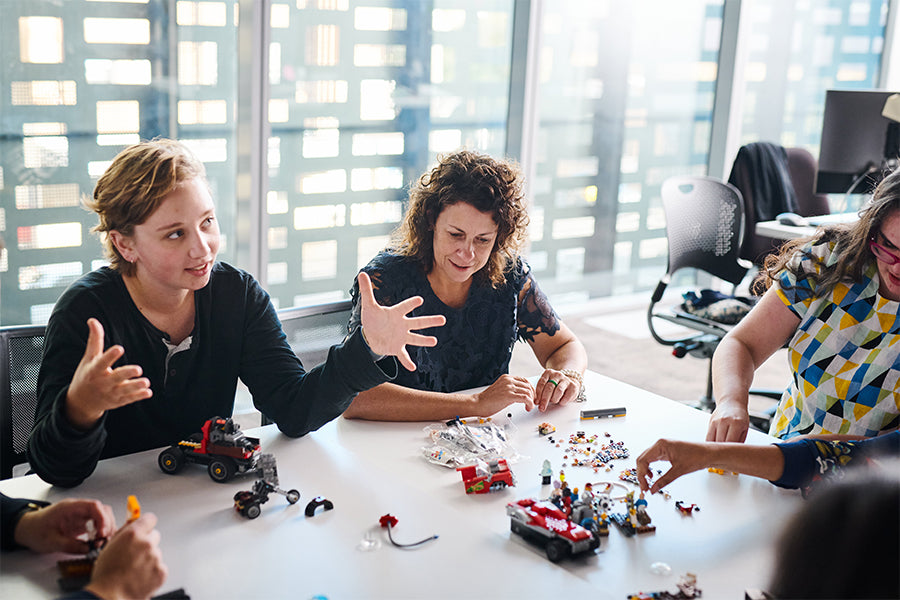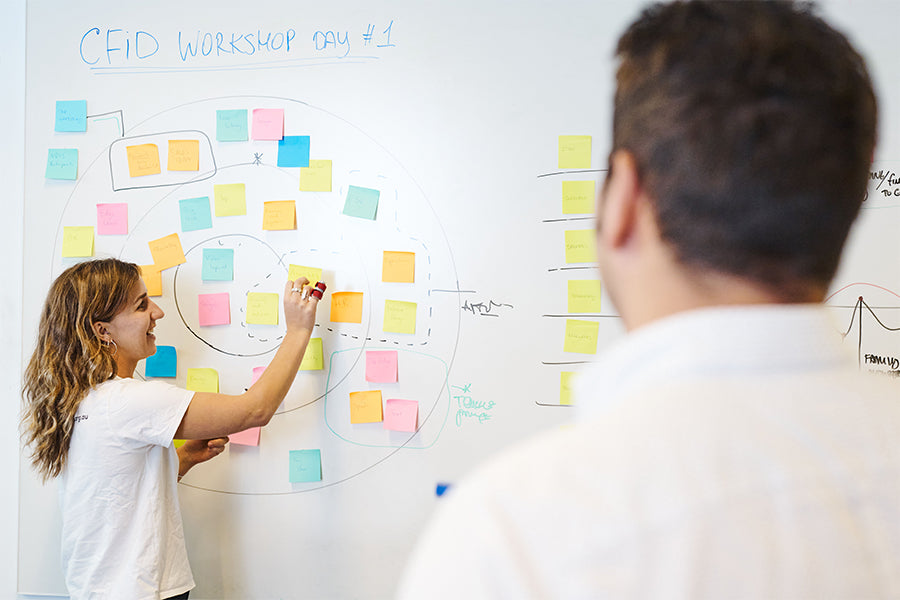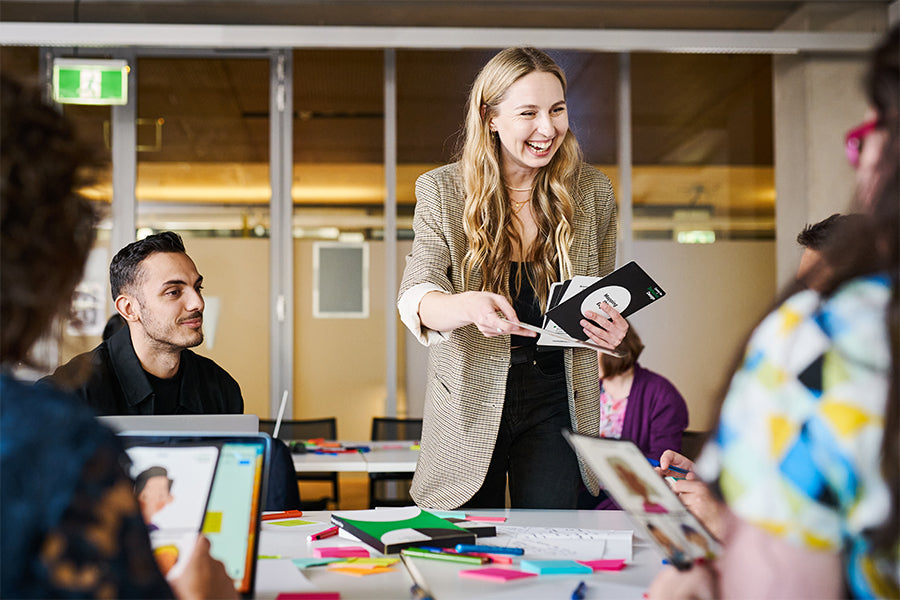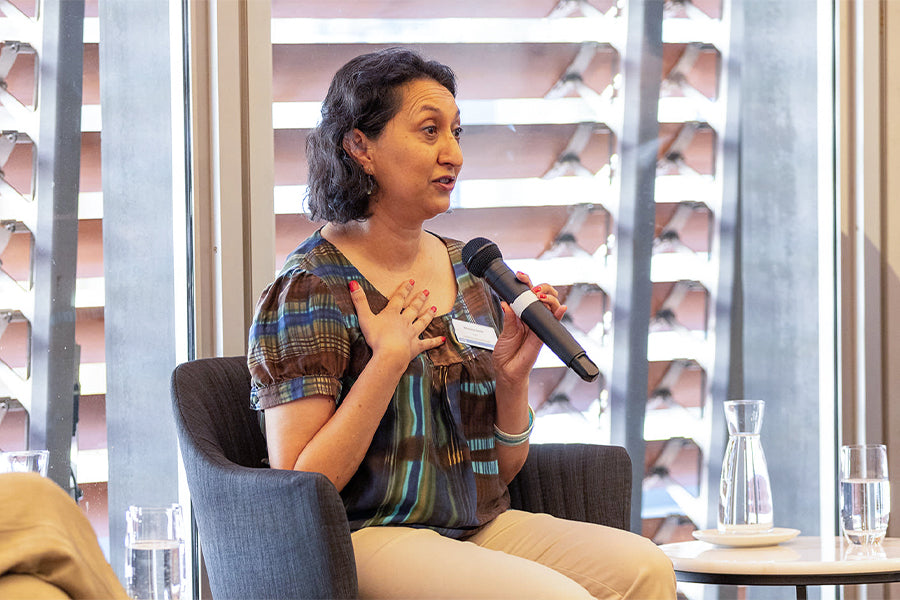Community Spotlight: “With, not for” Manisha Amin, Centre for Inclusive Design

Image credit: CfID
Centre for Inclusive Design (CfID) in Sydney, is not quite like any other organization we know. Excited to learn more, we were delighted Manisha Amin, CfID’s CEO was kind enough to have a chat with us about what she and her team get up to.
Understanding difference
15 years working in non-profits has taught Manisha about the complexities of ‘difference’. She has worked with those with lived experiences of disability, illness, grief, neglect and abuse. The connections she established with diverse communities showed Manisha how varied difference can be. She realized difference can only be understood when we listen to individuals talk about their own unique experience. “It made me think about my assumptions in a way I hadn’t before. All my judgements changed,” she explained with feeling. How Manisha’s approach to difference and therefore inclusion, evolved, would later play a vital role in the formation of Centre for Inclusive Design.

Image credit: Tanja Tiziana
Following in the footsteps of giants
Shortly after joining what was then Media Access Australia as CEO, organizational restructuring presented Manisha with an opportunity to build something new. Manisha recalls how she and her team wanted to ensure the project would have value and impact, and how they eventually figured out what that would look like.
“We asked ‘what does media mean in the fourth industrial revolution? What does access mean to people? Given we have the tools at hand, why isn’t the world more accessible? We interviewed over 100 organizations and people and came up with over 70 business ideas about what we wanted to be as an organization. We landed on the Centre for Inclusive Design.”
The Centre for Inclusive Design (CfID) would still operate as a social enterprise but would break free from the traditional preconceptions of what a charity can do. It’s often considered unique, and Manisha is quick to credit those whose inspiring work and advice brought the CfID to life.
“From leadership to culture, we are anything an organization needs to make the world more accessible. Where academics are the leading edge, we’re the practical people who help make it happen. That’s what makes us different.”
We are following in the footsteps of giants, Jutta Treviranus from the Inclusive Design Research Centre, Elizabeth Goodman at Dublin University, Leonie Watson from Tetra Logical and others. In my first weeks at work, we found these people online, and contacted them. They rang me, they visited. They trained us. This [CfID] didn’t come out of my head, it comes from the incredible work of these amazing people before us.”

Image credit: Adobe Stock
What is Inclusive design?
Inclusive design is an approach to designing solutions. It about considering the needs of user groups that have been excluded from traditional design processes. Manisha explained that Inclusion is often used interchangeable with accessibility. ‘Accessibility has historically been viewed as doing something for an individual, or augmenting the individual so they can access their environment.’ She then described the alternative approach of inclusive design.
“Inclusive design relies on the social model of disability, the notion that the world is better if we design with the insights of the people who are currently missing out. If we want the world to work for everybody, we need different insights.
We redefine strength and resilience and ask who has the greatest strength and resilience in a world built on the biases from the 19th century. To move into the new world, our insights need to come from elsewhere, and I can’t think of a better place than people who have experienced exclusion and have deep knowledge of where the 19th century fails.”
In the inclusive design methodology, people who haven’t been considered in the design process and have the greatest challenges using a product, service or environment are ‘edge users. Edge users commonly sit in traditionally marginalized groups.

Image credit: CfID
How to design inclusively
Drawing from the work of Jutta Treviranus’s team, CfID uphold three dimensions of design:
1. Recognize diversity and uniqueness (in the designer and who you’re designing for)
Each project team need to include people who belong to the edge group they are designing for, and experts to de-bias the designers. CfID’s team is small but diverse, and they also can access their global network brimming with a wide range of talent and insights.

Image credit: CfID
2. Co-design ‘nothing about us without us’
The lived experience and deep insights of edge users, together with the skills and creativity of designers, leads to open discussion, collaborative problem-solving and innovative, bespoke solutions. These solutions could not be conceived without the knowledge of the people for whom the design is intended. That’s why we should design ‘with’ not ‘for’.

Image credit: CfID
3. Broader beneficial impact
Inclusive Design should trigger a virtuous cycle of inclusion, leverage the ‘curb-cut effect’, and recognize the interconnectedness of users and systems. A dip in the curb or closed captioning may have been designed for people with disability but they benefit a much wider population. An inclusive design should always aim to benefit more people than its intended audience.

Image credit: CfID
Design like it’s a playground
Throughout the design process, CfID asks three questions originally created to help playground designers build inclusive spaces. They are simple to understand and applicable to any design.
1. Can I get there?
A playground must be in an accessible location that’s easy to get to. In other scenarios this question could mean asking if a price point is accessible or whether a job is advertised in accessible places and formats.
2. Can I play there?
Playgrounds should have benches for adults, a sandpit for toddlers and swings for those who don’t like to, or can’t climb. Similarly, workplaces should have accessible systems and spaces so employees with different abilities can work there.
3. Can I stay there?
Manisha believes this is the most important question. “This is about feeling safe and valued. If ‘can I stay there?’ works, then even if you can’t play with everything, it’s OK because you can find ways through it. You belong.” The question also invites feedback on how experiences are for people. It becomes clear what works and what doesn’t, so systems can be improved in a way that might not have been considered before.

Image credit: CfID
What does CfID do?
With inclusive design at its heart, CfID facilitates the creation of inclusive systems, environments, experiences and mindsets. To do this, they harness the talent and lived experience of their own diverse team as well as their extensive network of experts, edge users and diverse communities from around the world. They are consultants, thought leaders, advocates and educators.

Image credit: CfID
Consultancy
CfID’s consulting services provide solutions in customer experience, leadership and change, people and culture, technology, innovation and training. Their approach is to gently help move people to a space where they are comfortable and feel safe having conversations about diversity and inclusion. That confidence and their internal knowledge of their business allows them to reach a solution that is right for them.
Manisha highlighted the importance of providing support and embedding knowledge into an organization so changes are made from within.
“Our strong belief is that we don’t have the answer, their staff do. We say to the team, ‘we need to make this recruitment process more accessible. Here are four people who would be awesome for you, but you’re not reaching them. Talk to them about your recruitment process and they’ll tell you what doesn’t work. Ideate those things, work out how you want to do it.’ Every time we do this, the answers are different. The reason is, every company is different in culture, process, values. Any tweaks need to have their brand behind it, not ours.”

Image credit: 100% Human At Work
Thought leadership
CfID shares knowledge and inspires audiences through speaking engagements, their blog, podcast and resources such as their brilliant The Benefits of Designing for Everyone Report.
CfID has recently launched their Ally Program, a peer support group for individuals in organizations who are responsible for inclusion. Manisha and her team recognize the work can be challenging. Navigating sensitive issues leads to internal and external conflict, and fighting for inclusion, often means fighting yourself too, so the support of allies is key.

Image credit: CfID
Passion Projects
CfID work on projects which are not client funded, but they feel are important and should be explored. For example, Manisha is currently investigating the role of artificial intelligence in the use of Aboriginal Sign Language in the Justice space.
Education
CfID helps organizations who want to design inclusive systems understand what inclusive design is, and the benefits it leads to.

Image credit: Nathan Anderson
Designing for a better world?
Manisha has a talent for presenting inclusive design as practical and tangible, so it’s easy to see why so many private and public sector organizations turn to CfID for inclusion support. But something else she helps people see clearly, is the bigger picture - why inclusive design is beneficial to everyone. Manisha explained that designing inclusively moves conversations away from disability, gender, race and difference, and makes space for conversations about people and relationships. Because relationships between people are what we need to make the world a better place.
“Our work shows that by designing the world inclusively, we create better markets and a better world for everyone, and we all feel calmer and happier. Inclusive design is a Trojan Horse for social inclusion.”
Manisha’s vision for the future is one of social cohesion, where people don’t have to make accommodations or change who they are, to fit into an outdated environment. We often hear that something is not accessible because of the biases of the time in which it was designed. Now, in 2023, we are still designing, perhaps more than ever, and we have the awareness and resources to de-bias ourselves so we can design better. We need to design better. Whether it’s products, spaces, experiences, infrastructure or services, CfID has shown us we can seek to design with fresh insights and co-create a better world for everyone in it.
Thank you to Manisha for taking the time to share her story and the incredible work of Centre for Inclusive Design. Of course, we had one last question…
What does inclusion mean to Manisha?
“Inclusion means not having to justify who I am.”




